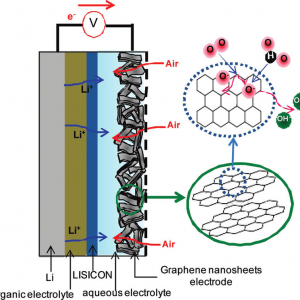What is Inverter in Lithium Battery?
Everyone knows that our car has both 12V jacks and 220V jacks for different electrical appliances. The credit for this is due to the inverter and converter.The inverter has characteristics of high efficiency, fast start-up, good safety and stability performance. Moreover, the inverter has five protection functions: short circuit protection, overload protection, over/under voltage protection, and over temperature protection. The inverter itself consumes part of the power when it is working, so its input power is greater than its output power. When the inverter is not in use, it is best to turn off the switch to reduce unnecessary waste.What is Inverter?
The inverter converts DC power (battery, storage battery) into AC power (generally 220V, 50Hz sine wave). This is actually a process of voltage inverting, hence it get the name of the inverter. A interver consists an inverter bridge, a control logic, and a filter circuit. Simply, an inverter is an electronic device that converts low-voltage (i.e. 12V or 24V direct current) into 220V or 250V alternating current. Because we usually rectify 220V alternating current into direct current for use, the inverter does the opposite. We are in an era of ”mobile”, mobile office, mobile communications, mobile leisure and entertainment are all around us. In the mobile era, people do not only need low-voltage direct current supplied by batteries or batteries, but also need the 220V alternating current. That is indispensable in our daily environment. Inverters can meet our needs. It is widely used in air conditioners, home theaters, electric grinding wheels, power tools, sewing machines, DVDs, VCDs, computers, televisions, washing machines, range hoods, refrigerators, video recorders, massagers, fans, lighting, etc.

Can the Inverter Use Lithium Batteries?
YES. Lead-acid batteries have the advantages of stable voltage, cheap price, simple maintenance, stable quality and high reliability. Therefore, lead-acid batteries have long occupied the battery choice of products that require high-capacity batteries before lithium batteries came out. However, lead-acid batteries also have the disadvantages of low specific energy, short service life, frequent daily maintenance, and high risk of leakage of internal constituent materials. After lithium batteries are developed, their use areas are gradually being replaced by lithium batteries.
Nowadays, there are still many inverters equipped with lead-acid batteries. The main reason for being equipped with lead-acid batteries is its stability and low cost.Businesses want to make money, and some consumers also want to buy inverters that can meet basic requirements at lower prices. Therefore, the market for lead-acid inverters still exists. In addition to consumers who fancy the immediate cost, there are naturally also consumers who pay attention to long-term benefits in the market. Compared with lead-acid batteries, lithium battery packs have a longer service life, a higher energy ratio, a smaller size, and lithium batteries are better than lead-acid batteries in terms of safety and environmental protection.
Therefore, there is also a market for lithium battery inverters. However, to replace these two batteries, there are still more things to pay attention to. For example, the DC voltage must be matched, and the voltage of the lithium battery pack must be consistent with the nominal DC input voltage of the inverter. Regarding the issue that the inverter can use lithium battery packs, it is basically possible to draw conclusions now. Many manufacturers have inverters with original lithium batteries, but the price is higher than that of inverters with lead-acid batteries.It is also feasible to transform the inverter originally equipped with lead-acid batteries into an inverter using lithium battery packs, mainly because the input voltage should be matched.
Three Precautions for the Usage of Inverters:
First, do not place the inverter in direct sunlight or near the outlet of the heater.The working ambient temperature of the inverter should not exceed 40 degrees Celsius;
Second, the inverter will heat up when it is working, so do not place items near or on it;
Third, the inverter is afraid of water, so don’t let it rain or sprinkle water on it.





